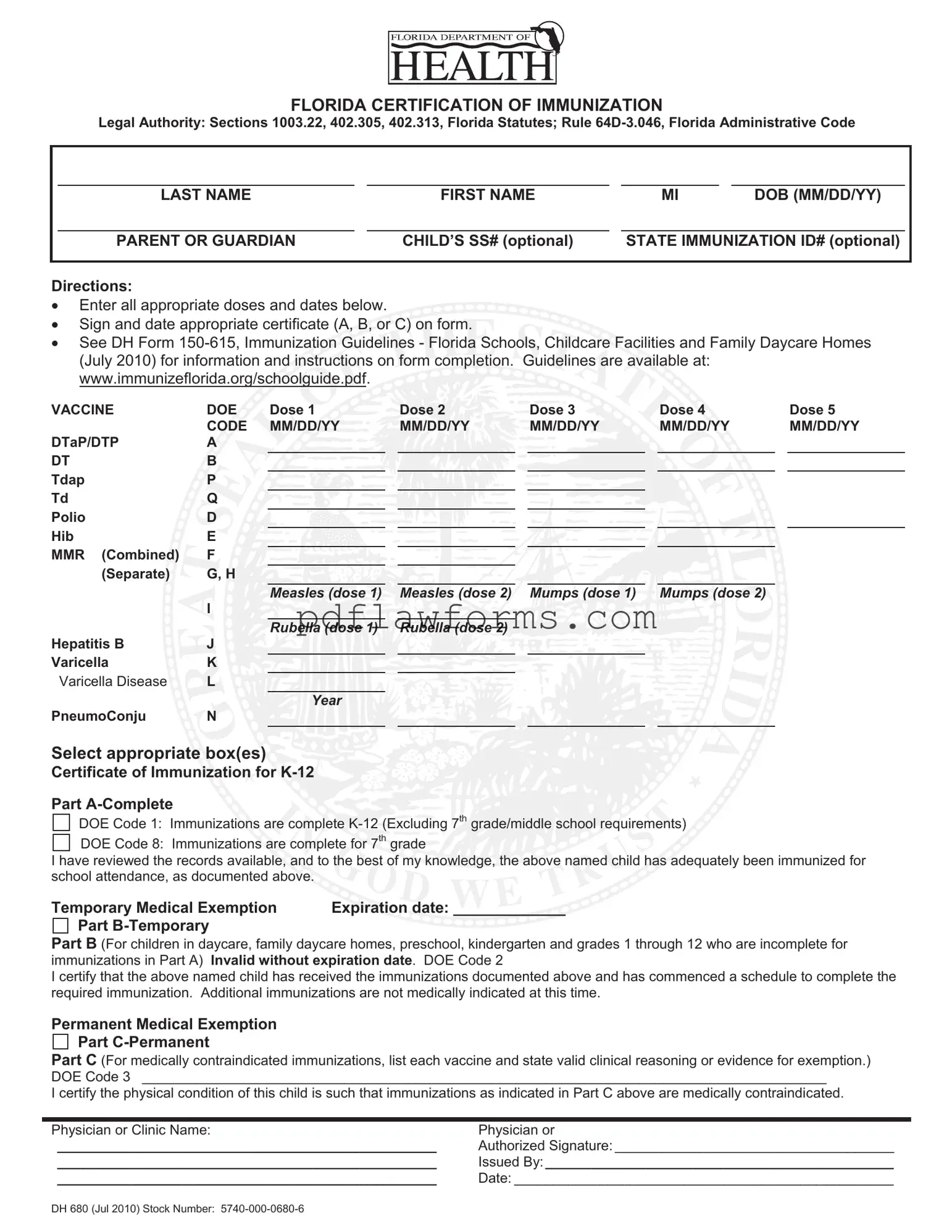Filling out the Florida Certification of Immunization form, also known as the 680 form, can be straightforward, but there are common mistakes that can lead to delays or complications. One frequent error occurs when individuals fail to include all necessary doses and dates for each vaccine. It is essential to ensure that every dose received is documented accurately. Omitting a dose can result in the child being considered non-compliant with immunization requirements, potentially affecting school enrollment.
Another common mistake is neglecting to sign and date the appropriate certificate section of the form. The form includes different certificates (A, B, or C), and each serves a specific purpose. If a parent or guardian forgets to sign or date the form, it may be deemed invalid. This oversight can lead to the need for resubmission, causing unnecessary delays in the child's school registration process.
People often misinterpret the instructions regarding the optional fields, such as the child's Social Security number and state immunization ID. While these fields are not mandatory, some individuals mistakenly believe they must be filled out. Leaving these fields blank is acceptable if the information is not available. However, if a parent chooses to include this information, they should ensure its accuracy to avoid confusion.
Additionally, individuals sometimes overlook the expiration date for temporary medical exemptions. If a child has not completed their immunizations and requires a temporary exemption, the expiration date must be clearly stated. Failure to provide this date renders the exemption invalid. This can create issues for children in daycare or school settings, where compliance with immunization requirements is strictly enforced.
Lastly, when detailing a permanent medical exemption, some individuals may not provide sufficient clinical reasoning or evidence for the exemption. It is crucial to clearly articulate the medical reasons for the exemption in Part C of the form. Without adequate justification, the exemption may not be accepted, leading to complications in the child's enrollment process. Ensuring that all sections of the form are filled out accurately and completely will help facilitate a smoother submission process.
